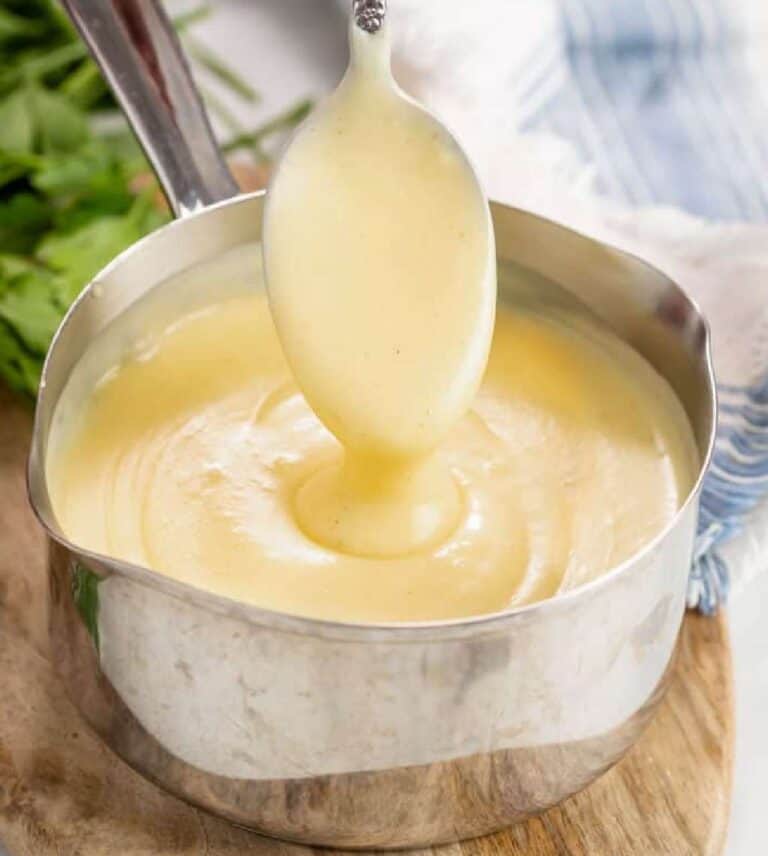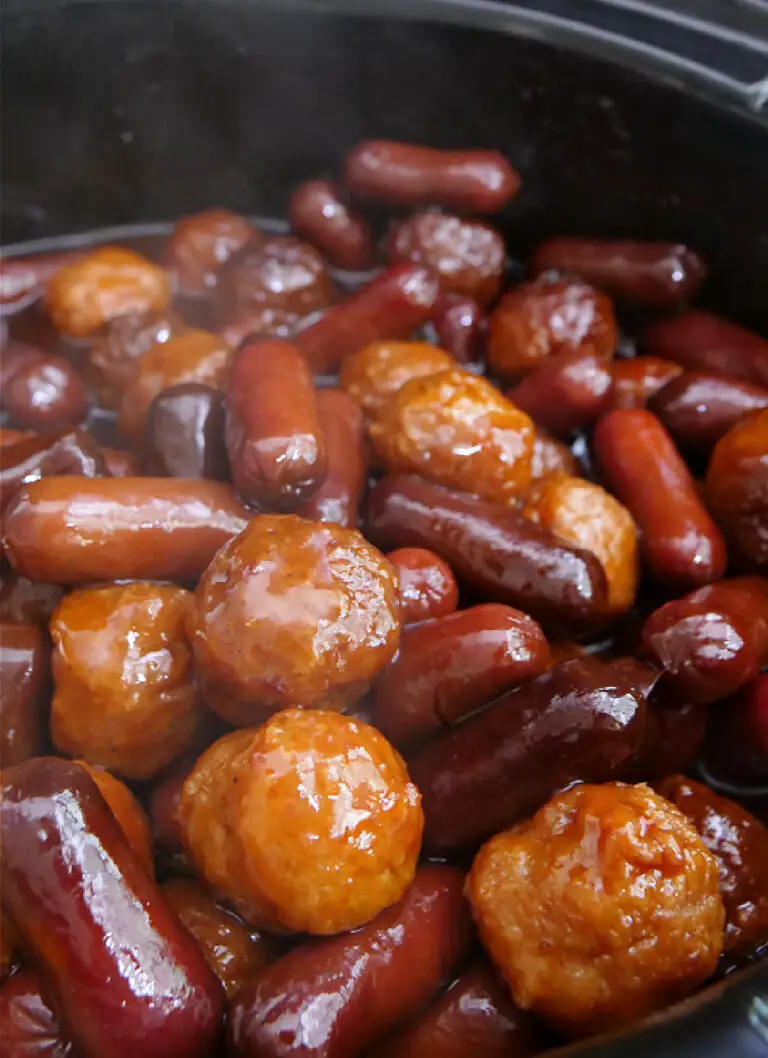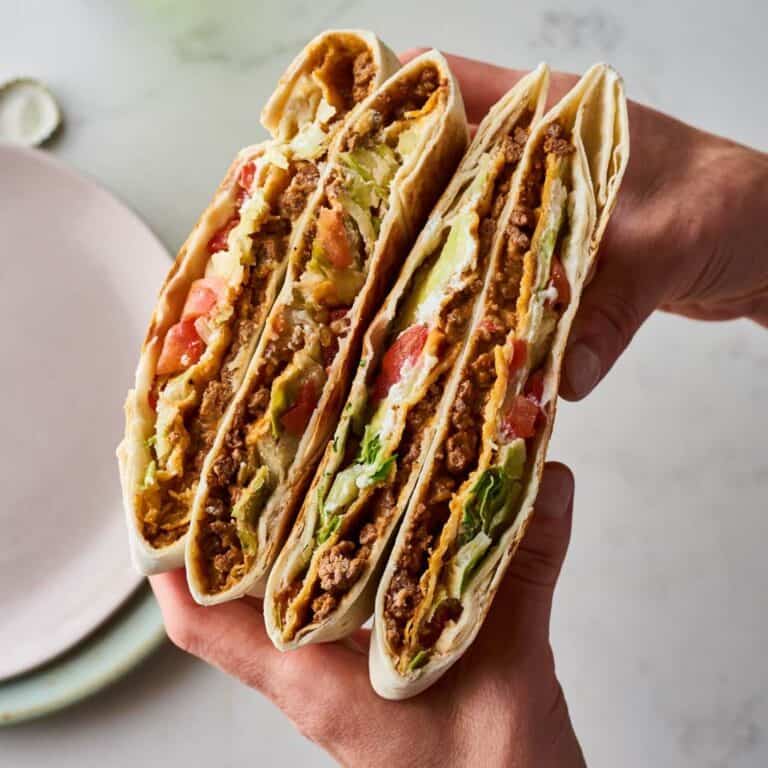Why Are My Crab Legs Soft and Rubbery? How to Prevent It?
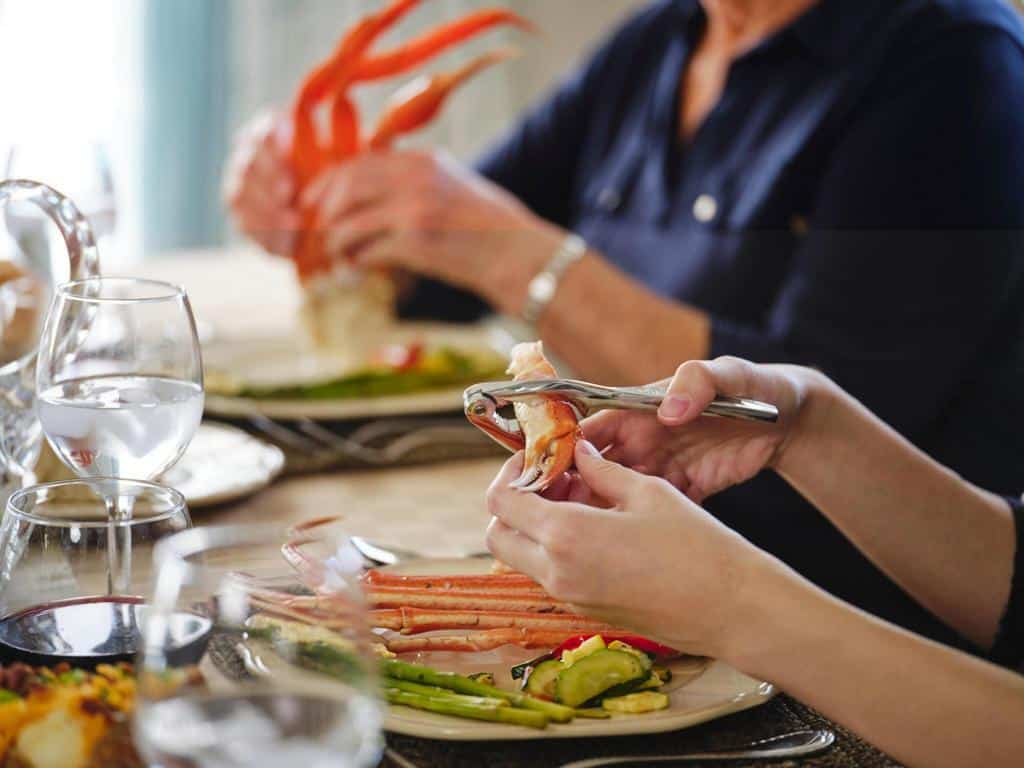
Have you ever eagerly cracked open a crab leg only to be dissatisfied with its soft, rubbery texture? It can be incredibly frustrating, especially when you’ve gone through the effort of cooking or ordering fresh crab legs. But why do some people experience this unfortunate outcome while others enjoy succulent and tender meat?
The answer lies in a combination of factors. These range from improper cooking techniques to issues with the quality or freshness of the crabs themselves.
In this article, we will delve into the reasons behind soft and rubbery crab legs. We will also give you useful tips to prevent this unpleasant texture from ruining your seafood feast. Whether you’re a seasoned cook or an adventurous food lover, understanding these factors will ensure that your next encounter with crab legs delivers pure delight for your taste buds.
So grab a bib, and let’s dive deeper into the mysteries of why crab legs turn out less than perfect. There’s nothing worse than having your culinary efforts go awry when it comes to enjoying one of our favorite delicacies! Stay tuned as we uncover expert insights on how to achieve perfectly cooked, tender crab legs every single time.
Understanding Soft and Rubbery Crab Legs
Understanding the texture of crab legs is crucial for enjoying this delicacy. Soft and rubbery crab legs can be disappointing if you’re expecting tender, succulent meat. When crab legs are soft and rubbery, it usually indicates that they are overcooked or not fresh. Overcooking crab legs can cause the meat to become tough and lose its natural sweetness.
Fresh crab legs should have a firm texture with a slight springiness when touched. They should not feel mushy or limp. To ensure you’re getting the best quality crab legs, look for signs of freshness such as bright color, a mild ocean scent, and intact shells.
In addition, buying from reputable seafood vendors can improve your chances of getting top-quality crab legs.
Here’s a quick guide to understanding the texture of crab legs:
| Texture | Description |
| Tender | Firm with a slight springiness, indicative of freshness |
| Rubberiness | Overcooked or not fresh, resulting in a tough texture |
| Softness | Indicates mushiness and potential spoilage |
| Firmness | Ideal texture, indicating freshness and quality |
By understanding the texture cues, you can ensure a delightful dining experience with crab legs every time.
Crab Quality Freshness Issues
The freshness of the crabs themselves can have a significant impact on the texture and quality of crab legs. If you find that your crab legs are coming out soft and rubbery, it may be due to poor-quality or expired crabs.
One possible reason for this is purchasing crab legs that have been frozen and thawed multiple times. Each time a crab leg goes through the freeze-thaw cycle, its texture can deteriorate, resulting in a softer consistency. It’s best to opt for fresh, never-frozen crab legs whenever possible.
Another factor that can contribute to soft and rubbery crab legs is buying crabs that have been sitting on display for too long. Over time, these crabs will start to lose their natural moisture content, which can lead to less firm meat. To ensure optimal quality, choose live crabs or ones that have just recently been harvested.
Lastly, improper handling during transportation or storage can also impact the freshness of the crabs. Crabs and other crustaceans are highly perishable. They require careful handling at low temperatures to maintain quality. If proper cold chain management has not been followed, such as prolonged exposure to warm temperatures or extended periods without refrigeration, it could result in softer shells and potentially spoiled meat.
To avoid freshness issues that negatively impact your crab leg texture, always purchase fresh, live, or newly harvested crab legs.
Choosing the Right Crab: Finding the Perfect Texture for Your Crab Legs
When it comes to enjoying tender and succulent crab legs, choosing the right type of crab is crucial. Different varieties of crabs have different texture profiles, which can greatly impact the final result on your plate.
One popular choice is Alaskan King Crab, known for its firm and meaty texture. With large leg sections brimming with sweet and delicate flesh, these crabs are a top pick for many seafood lovers. Dungeness crab, on the other hand, offers a slightly softer texture while still maintaining a delicious flavor.
To ensure you get fresh and high-quality crab legs, make sure to buy them from reputable seafood markets or fishmongers. Look for signs of freshness, such as bright colors in the shell (deep red or vibrant orange) and a lack of any strong odor. Freshly caught crabs will also have intact shells without any cracks or damage.
If buying frozen crab legs is your only option, choose ones that are individually quick-frozen (IQF). They tend to retain their quality better during freezing and thawing processes. Make sure there are no ice crystals inside the packaging, as this may indicate that they were not properly stored or handled.
Remember that when it comes to selecting fresh or frozen crab legs, trusting your senses is key – use visual cues like color and smell along with recommended storage guidelines for proper selection!
Cooking Methods: Avoiding Common Mistakes for Perfectly Cooked Crab Legs
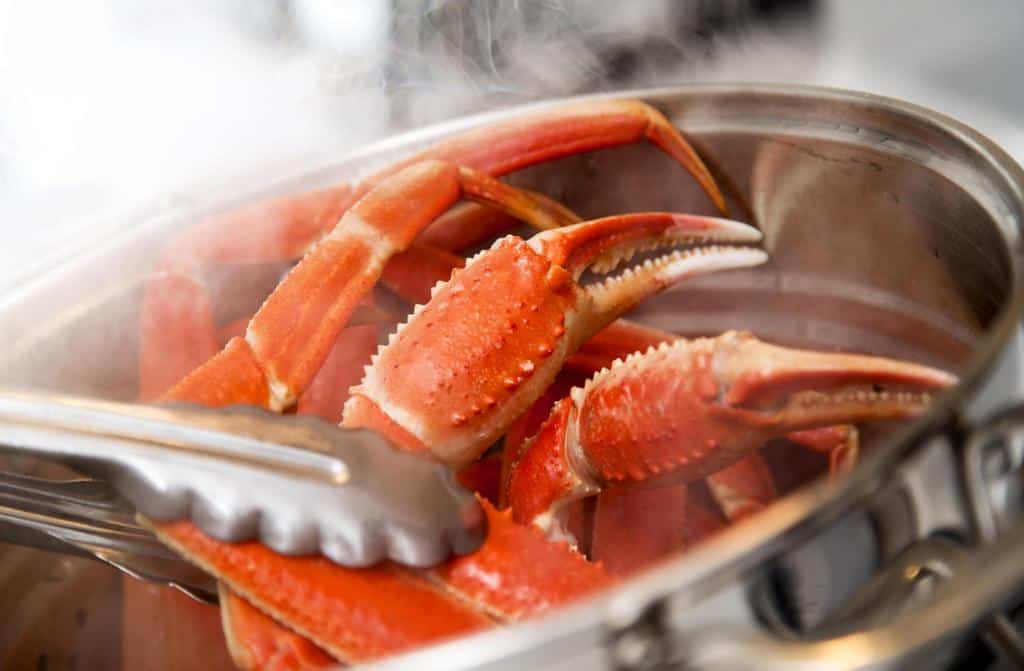
When cooking crab legs, how they are prepared and cooked is very important for getting that tender texture you want. Unfortunately, many people unknowingly make some common mistakes that can lead to rubbery and unappetizing crab legs.
One of the most frequent blunders is overcooking the crab legs. Crabs are delicate creatures, and their meat cooks relatively quickly. When they’re subjected to excessive heat or left in boiling water for too long, their flesh becomes tough and chewy.
Remember that when cooking frozen crab legs, they have usually already been parboiled before being frozen. Therefore, all you need to do is heat them through until they are thoroughly hot.
Conversely, undercooking can also result in unpleasantly soft or slimy crab leg textures. If your crab legs seem translucent or slightly raw after following the recommended cooking times, continue cooking them for a few more minutes until the meat turns opaque and firm.
To ensure perfectly cooked crab legs with a succulent texture every time, pay close attention while preparing them according to your chosen recipe’s instructions. Be mindful of both time increments and testing for doneness. Gently pry apart a shell section near the joint. If the meat easily separates from its membrane without any resistance or rubberiness upon tasting (assuming it’s sufficiently warm), then voila! You’ve achieved beautifully cooked crab legs ready to enjoy!
Best Cooking Methods for Crab Legs
There are several cooking methods you can use to achieve perfectly cooked, tender crab legs. Each method has its own merits, and the choice ultimately depends on your personal preference.
1. Boiling
Boiling is a popular technique that is quick and easy. Simply fill a large pot with water and bring it to a rolling boil. Add salt or seasonings of your choice, such as Old Bay seasoning, for extra flavor. Carefully place the crab legs in the boiling water and cook them for 5-7 minutes until they turn bright orange. Remember not to overcook them, as this can make the meat rubbery.
2. Steaming
Steaming is another great option that helps retain moisture and enhances the natural sweetness of the crab meat. To steam crab legs, fill a pot with about an inch of water or a flavored liquid like beer or wine. Place a steamer basket inside the pot and bring the liquid to a simmer. Arrange the crab legs in the steamer basket, cover the pot tightly with a lid, and steam for approximately 6–8 minutes.
3. Baking
Baking offers an alternative method that yields delicious results while requiring minimal effort. Preheat your oven to 375°F (190°C) and line a baking sheet with foil or parchment paper for easier cleanup later on. Brush some melted butter or olive oil onto each crab leg. Sprinkle with seasonings like garlic powder or paprika, if desired. Arrange the legs on the prepared baking sheet. Bake for around 15-20 minutes until heated through.
Tips for Grilling Crab Legs

Grilling is a fantastic way to enhance the natural flavors of crab legs while adding a smoky, charred touch. However, it requires some careful consideration to prevent your crab legs from turning out soft and rubbery. Here are some techniques and tips to ensure perfectly grilled, tender crab legs.
Firstly, be mindful of cooking time. Overcooking can easily lead to tough and chewy crab meat. To avoid this, start by preheating your grill on medium-high heat and brushing the crab legs with melted butter or oil before placing them on the grill grates. Cook the crab legs for about 4-6 minutes per side, depending on their size. Keep an eye on them as they cook, since smaller crab legs will require less time than larger ones.
Another important aspect of grilling is moisture retention. You can accomplish this by basting the crab legs with your preferred marinades or sauces during the cooking process. Consider experimenting with citrus-based marinades that complement seafood well, or try a spicy glaze for a kick of flavor.
Remember that timing is key when it comes to grilling crustaceans like crabs: too long on high heat leads to dryness and possibly burnt shells; too short over low heat results in undercooked portions that tend toward sponginess rather than firmness.
Factors Influencing Crab Texture
Beyond cooking methods, a variety of other factors can affect the texture of crab legs. One such factor is the species of crab itself. Different crab species have varying amounts of muscle and connective tissue. This can impact the overall tenderness of their meat. For example, king crabs are known for their naturally tender and sweet meat, while snow crabs may have slightly chewier flesh.
Another important consideration is the freshness and quality of the crabs before cooking them. If you purchase pre-cooked or frozen crab legs, it’s essential to ensure they were handled and stored properly prior to your purchase. Crabs that have been stored at incorrect temperatures or for extended periods may develop soft or rubbery textures.
Similarly, if you buy live crabs to cook at home, make sure they are lively and active when purchasing them from a reliable source. Freshly caught or harvested crabs with intact limbs typically yield firmer and more succulent meat. In comparison, those that have been mishandled during transit do not.
To prevent rubbery texture in your crab legs, always select high-quality seafood from reputable sources. Pay attention to details like storage conditions before making a purchase. By being mindful of these additional factors influencing texture, you’ll increase your chances of enjoying perfect, tender crab legs every time you prepare them.
Conclusion: How to Prevent Crab Legs from Getting Soft and Rubbery
Properly cooked, tender crab legs are a seafood lover’s delight. By understanding the reasons behind soft and rubbery crab legs, as well as implementing preventive measures, you can ensure a memorable dining experience every time.
When it comes to enjoying succulent and tender crab legs, prevention is key. By taking a few proactive steps before cooking, you can ensure that your crab legs turn out delicious every time. Let’s dive into some helpful tips from famous chefs. They’ll help you select fresh crabs, assess quality at the point-of-sale, properly store crabs before cooking, and determine optimal cooking times based on size.
1. Selecting Fresh Crabs: The first step in preventing soft and rubbery crab legs starts with choosing the right crabs. Look for live or recently deceased crabs with intact shells and lively movements. Avoid purchasing pre-cooked or frozen crab legs if possible, as they may have already lost their freshness.
2. Assessing Quality at Point-of-Sale: Buying live crabs is ideal for premium-quality meat. However, pre-cooked or frozen options are often more readily available. If you opt for these alternatives, make sure to examine them closely before making a purchase. Check for any off smells or discoloration on the shells; this could be an indication that the crabs were not stored properly or have been sitting too long.
3. Proper Storage Prior-to-Cooking: Even if you’re using live crabs, it’s essential to store them correctly until you’re ready to cook them to maintain their texture and flavor. Keep live crabs in a damp environment, such as a cooler filled with wet newspaper or seaweed. Ensure good airflow, but don’t let the crabs get directly wet.
4. Determining Optimal Cooking Times Based on Size: Cooking time plays a crucial role in achieving perfectly cooked crab legs that are tender yet firm in texture. Larger-sized crab legs may require longer cooking times. Smaller ones will need less time to reach perfect doneness without becoming mushy.


